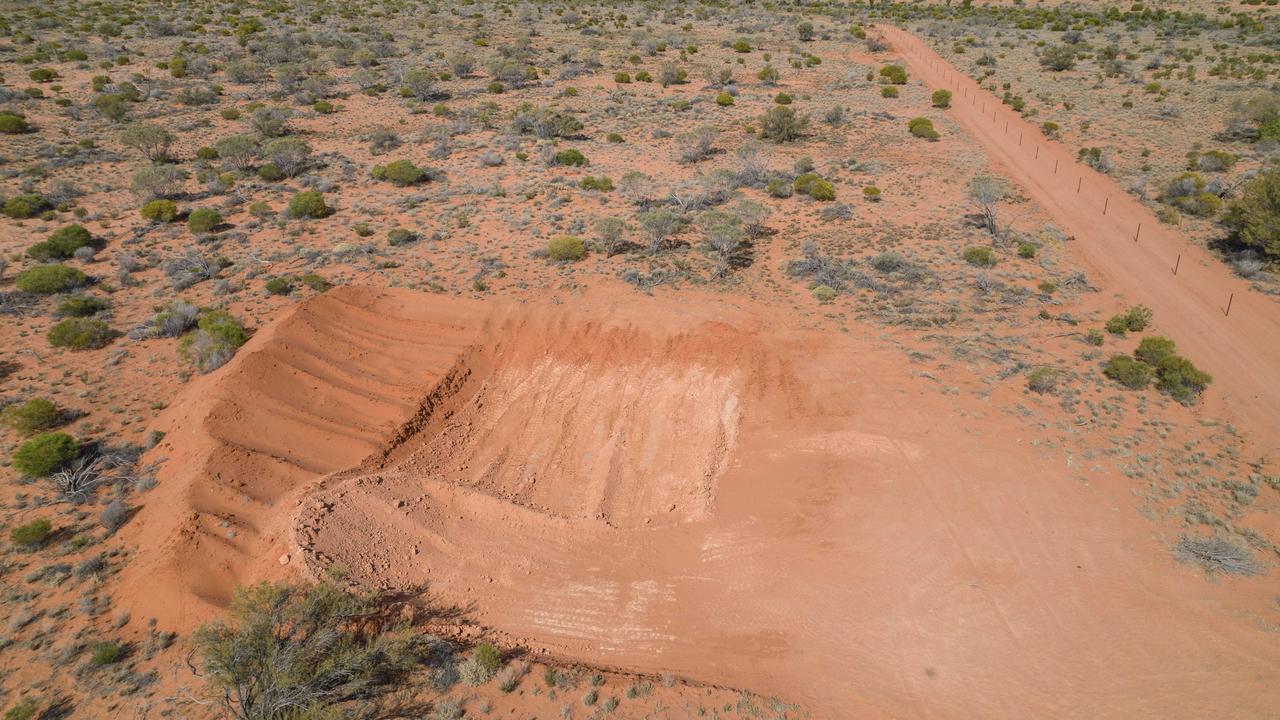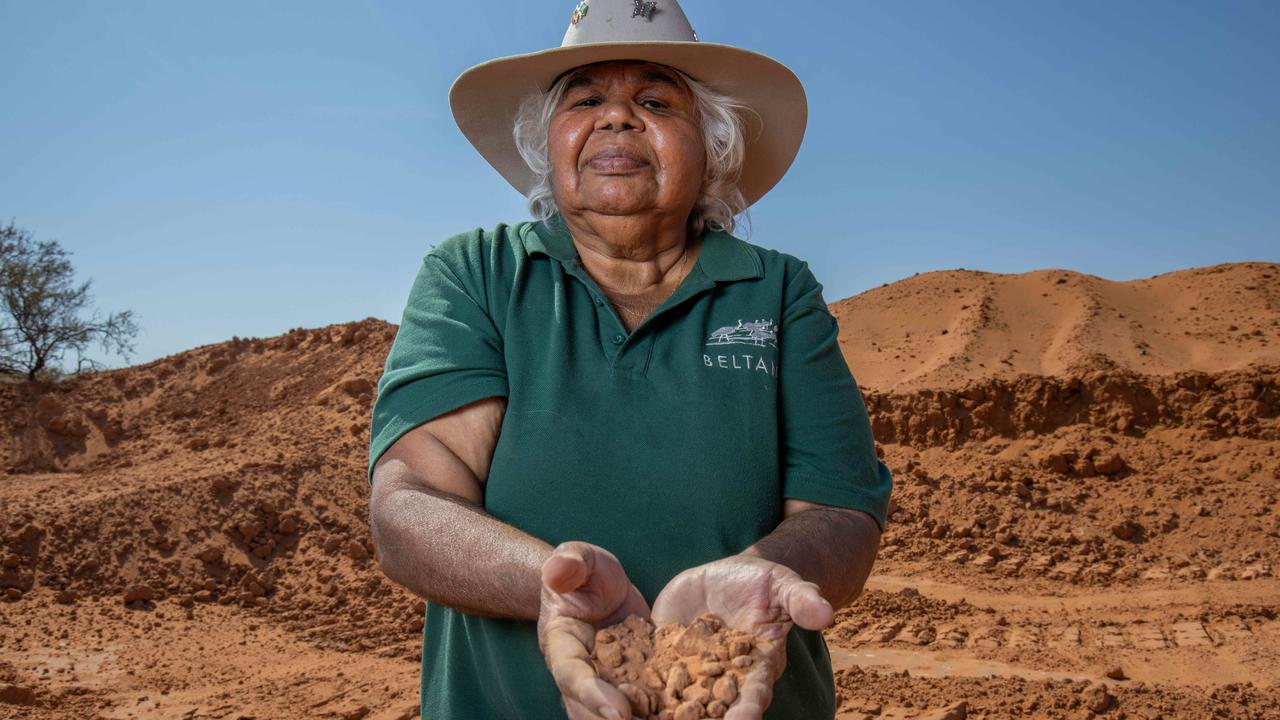Traditional owners left distraught after earthworks destroyed sacred Adnyamathanha sites in the Flinders Ranges
The state government is scrambling to understand “confusion” that led to “unauthorised” earthworks destroying sacred Flinders sand hills, leaving Elders devastated.
SA News
Don't miss out on the headlines from SA News. Followed categories will be added to My News.
Flinders Ranges traditional owners say they are the victims of “cultural genocide” after unauthorised earthworks destroyed sacred Adnyamathanha sites metres from one of South Australia’s most prized national parks.
Culturally significant sand hills linked to dozens of ancient Adnyamathanha storylines were destroyed after the Environment Department approved earthworks for a new fence line on the boundary of the Nilpena Ediacara National Park and Beltana Station before consulting traditional owners.
“When I saw it I cried,” Adnyamathanha woman Beverley Patterson said.
“This was blatant disregard of our culture. I’m sad and angry that this could happen in this day and age.”
Heather Stuart, another Adnyamathanha traditional owner, described the damage to the sand hills as “cultural genocide”.

The earthworks were part of plans to install a new fence line along the boundary after the opening of the national park in April.
The park is home to 550-million-year-old fossils and is the cornerstone of the state government’s bid for the Flinders Ranges to be World Heritage listed.
The new fence was to be installed along an existing fence line, about 15km long, to prevent livestock from entering the national park.
On August 30, the Environment Department wrote to the Adnyamathanha Traditional Lands Association (ATLA) – the relevant Native Title body – seeking advice on whether a cultural survey was required before works began on a previously unfenced area of 2km.

However, in an email sent on August 29 and obtained by The Advertiser, a department employee wrote to the lessee of Beltana Station advising work could begin, but did not specify the work could only be undertaken in previously cleared areas.
It is understood the contractor who completed the grading was then engaged by Beltana Station.
In previous correspondence in July, the same department employee said ATLA would need to determine if a cultural clearance was required for works on previously undisturbed ground.
“No works can be started on this section until we receive authorisation,” they said.
The work was stopped on September 4 after the department became aware of the unauthorised works.
National Parks and Wildlife Service regional operations director Stuart Paul said the department would review its approval processes after “apparent confusion” over the earthworks.
Mr Paul said the contractor was instructed to cease work immediately after the department became aware of “unauthorised” grading.

“The department and Traditional Owners will conduct a site inspection at the earliest possible opportunity,” Mr Paul said.
ATLA special administrator Peter McQuoid said the association’s Culture, Heritage and Native Title Committee was aware of the damage.
“ATLA will treat it with the utmost urgency,” he said.
“ATLA will diligently pursue any claims of potential damage to Adnyamathanha cultural sites.
“We will pursue that until we know exactly what’s happened and we will be looking at why, how and, more importantly, how that’s to be prevented in the future.”
Ms Stuart’s sister and fellow traditional owner Regina McKenzie said the sand hills were “never to be touched”.
“That area is so sacred to us,” she said.
“There are things underneath those sand hills that we don’t want anybody touching.”

As part of the works, an existing track was significantly widened inside the Beltana Station boundary and almost a dozen borrow pits, large trenches dug with heavy machinery to move soil from one location to another, were dug in the culturally significant sand hills, with one pit measuring about 250sq m.
Mr Paul said the Environment Department had confirmed there were “no registered sites of cultural significance affected as a result of the works”.
However, Mr Paul said the department had contacted ATLA “with a view to arranging prompt inspection of the works conducted to date and those proposed in the immediate future”.
He said the department had been in “regular contact” with the Aboriginal Affairs and Reconciliation section of the Attorney-General’s Department.

Ms Patterson, who has lived at Beltana for almost 70 years, said the sites were culturally significant to Adnyamathanha people despite not being registered.
“Not all sites are registered,” she said. “There are sites there. They just can’t go around causing destruction to the land. They had no right to do this.”
Pastoralist Andrew Doman, who owns Yadlamalka Station, bought Beltana Station for $8.4m in 2017.
Mr Doman, who has granted a lease for the property, did not respond to The Advertiser’s questions regarding the earthworks.
Instead, the Doman family contacted the Environment Department.
There is no suggestion of wrongdoing by Mr Doman.

Environment Minister Susan Close urged “landholders, contractors and government departments to consult with native title holders and to ensure the appropriate permissions are sought and obtained before disturbing a site”.
“When works or other activities are undertaken without the appropriate cultural heritage surveys and approvals being sought and provided, it causes significant angst within Aboriginal communities,” Dr Close said.
The traditional owners have called for a full survey of the area to determine the damage.
“This is heartbreaking,” Regina McKenzie said. “We cry for that land.”
More Coverage
Originally published as Traditional owners left distraught after earthworks destroyed sacred Adnyamathanha sites in the Flinders Ranges








